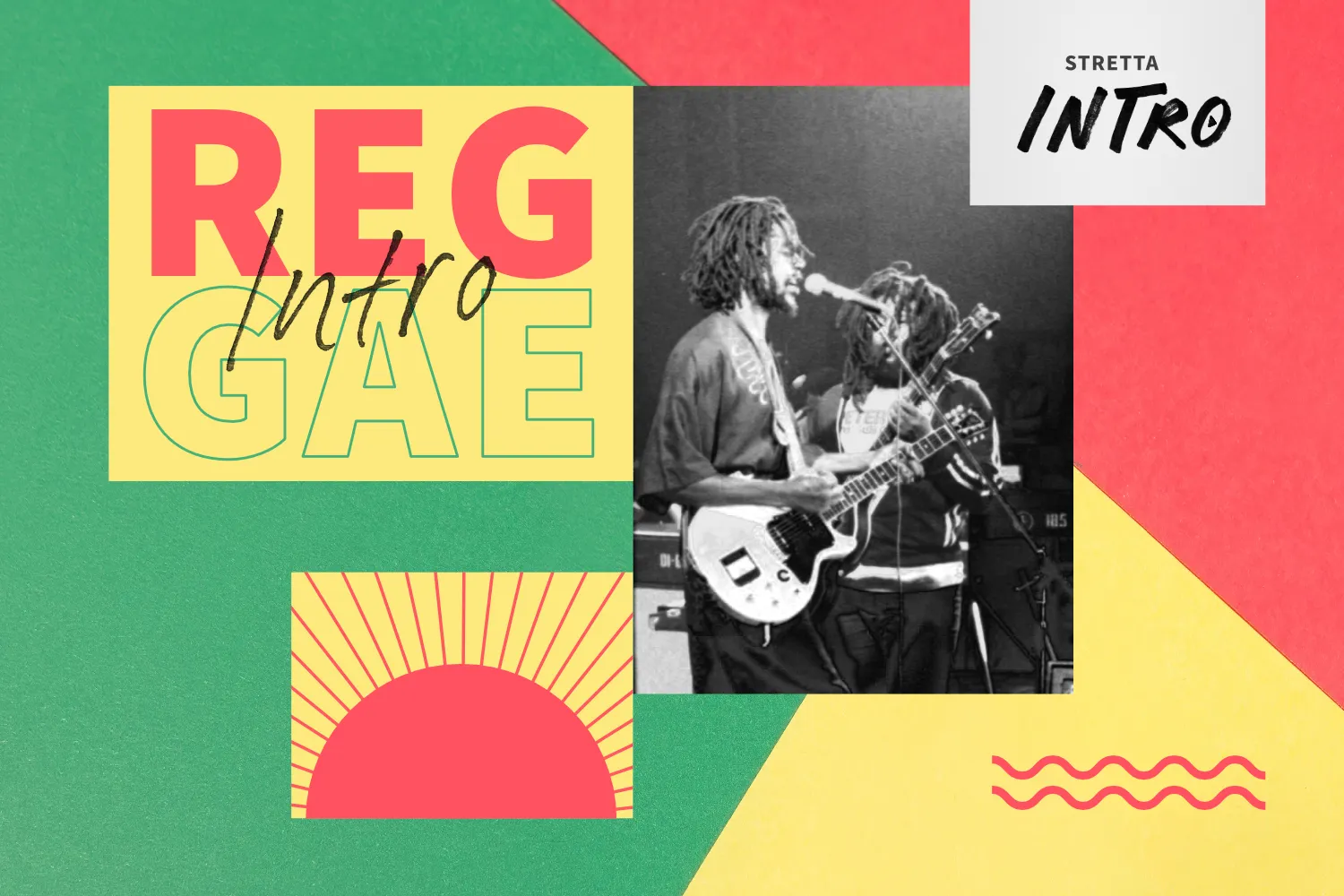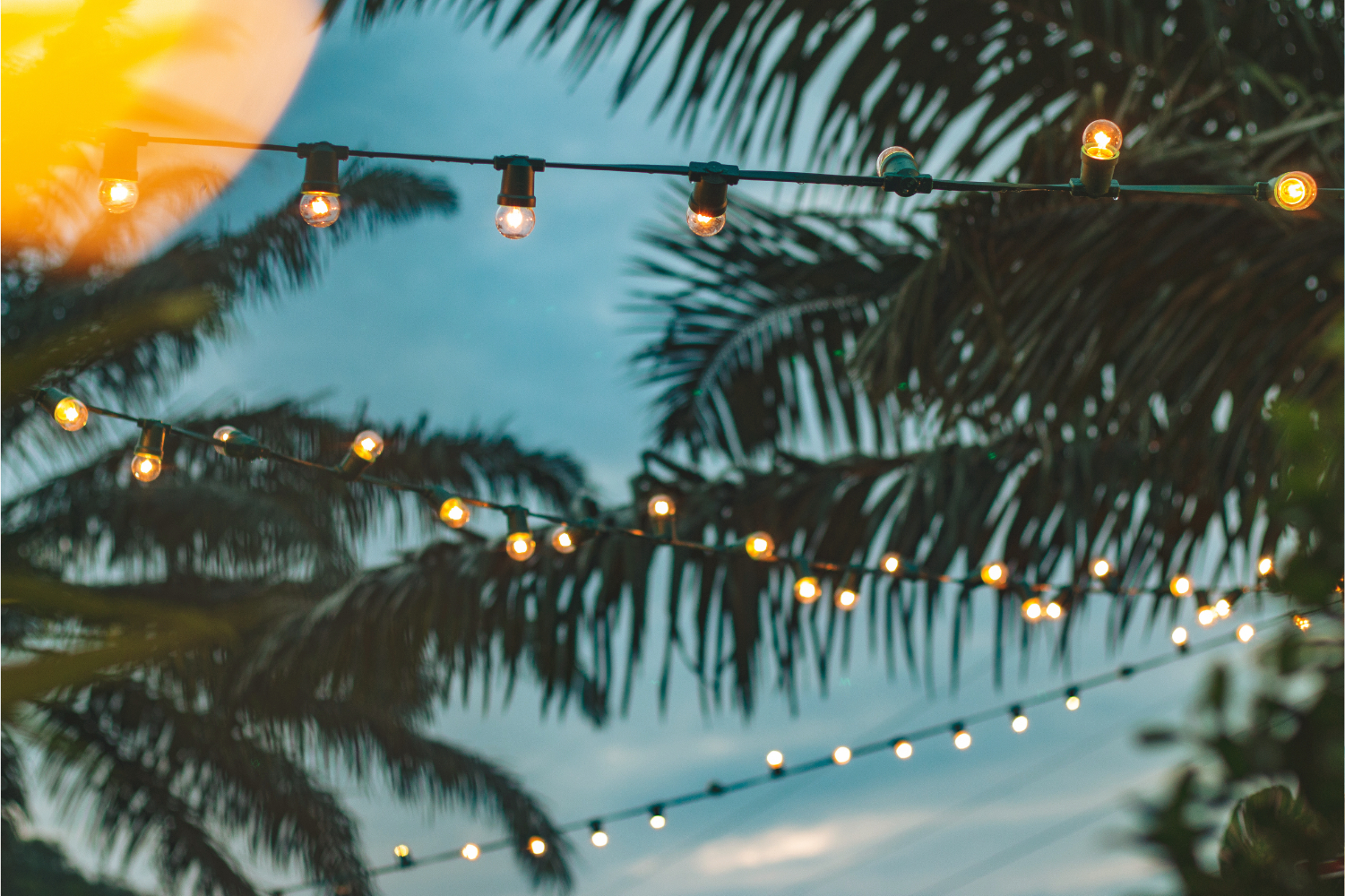by Christian Geiger (01.06.2023)
In One love, one heart, I summarized the origins of reggae. Now, let's take a closer look at what makes reggae musically unique, which songs are absolute classics, and the typical roles of individual instruments, so you can try your hand at your instrument during the next reggae jam.

Peter Tosh & Robbie Shakespeare, Bush Doctor Tour, Cardiff, 1978, Photo by Tim Duncan / CC 3.0
At first glance, reggae seems simple. It doesn't require years of hard-earned skills on the instrument or deep tonal understanding to play reggae. All you need is a bit of knowledge about your instrument's role, as reggae follows clear rules.
The song structure is simple: verses alternate with choruses. Harmonically, reggae is straightforward: a few triads are enough for an entire song – sometimes even just one! You won't find complex chords like in jazz here. This might sound monotonous at first, but it's actually appealing because frequent repetitions can lead to a trance-like state. Reggae is meant to be easygoing, allowing you to sink into it and dance.
Let's summarize: minimal requirements for musicians, simple song structure, and simple chords. So, how do the songs differ? As often, the devil is in the details. But first, a few more basics about the roles.
Reggae is always in 4/4 time. A typical song tempo is between 50 and 80 beats per minute, making it quite slow. A typical band setup includes vocals, drums, bass, at least one guitar, and at least one piano and one organ (or keyboards with appropriate sounds). Horns are common but not essential.
A characteristic of reggae is the offbeat. It's called this because it sounds between the four beats. In its simplest form, the piano, organ, and guitar together emphasize the 'and' between each of the four beats.
The guitar typically plays in the so-called skank style: adding a sixteenth note after the offbeat.
The organ often plays the offbeat as a bubble: with a sixteenth note before and after the offbeat, creating a frame. It's important that the two framing sixteenth notes are at least an octave lower than the organ's offbeat. How does that sound? Like in this example from 01:05:
We use YouTube to embed video content. This Google service has its own cookies and may collect data about your activity. You can find more information in the data protection declaration of the provider. We need your consent to display YouTube videos:
Show YouTube contentThe drums, compared to the offbeat, are somewhat more flexible but also more important, as they fundamentally determine the groove. There are three standard beats in drums that appear in many variations:
Now, there's one more instrument missing. In reggae, perhaps more than any other genre, the bass holds a special significance, often considered the most important instrument in the band. The bass provides the right 'vibe' and (due to the clear rules for the other instruments) determines whether a song is static or groovy. The bass needs to play with note values, for instance, a walking bass like in jazz (or early ska) wouldn't work in reggae. Instead, the bass plays short, repetitive melodies that dance around the offbeat. It is deep, muffled, and prominent, as if its goal is to massage your brain. Don't believe me? Listen for yourself.
We use YouTube to embed video content. This Google service has its own cookies and may collect data about your activity. You can find more information in the data protection declaration of the provider. We need your consent to display YouTube videos:
Show YouTube contentCreating a lot from a little, that's the true art of reggae. And it works! Those who are not overwhelmed by the plethora of tonal possibilities have much more time and focus to creatively express themselves in perhaps previously unknown ways. When the constraints of the instrument (especially piano, organ, and guitar) don't offer much creative space, it takes even more finesse to achieve significant effects with small variations. This doesn't always mean playing: good reggae musicians are recognized by their ability to not take the spotlight with solo-like performances but to pause for one or more measures.
Experienced reggae musicians also know how to focus on the sound experience. The piano sound of a keyboard should ideally be different for each song to give it its own musical stamp. A guitar can occasionally add reverb effects or WahWah (like opening and closing dampers on horns) for just the right amount of variation. Each instrument can vary the offbeat with short melodic units. These small changes ensure that monotony does not arise, without disrupting the "relaxed" framework.
The fascinating thing about reggae is recognizing the musicians' creativity through the few and subtle deviations. Reggae doesn't need the best solo, the most intricate break, or the chorus with the greatest recognizability. It simply needs the feeling for the vibe and the willingness to step back. Sometimes easier said than done. Bob Marley & The Wailers' "Stir It Up" clearly demonstrates how the bass takes on a melodic function in the rhythm section and instantly catches the ear, while the usual instruments stick to smaller interjections alongside the offbeat foundation. The solo at the end places special emphasis on a melodic quality.
We use YouTube to embed video content. This Google service has its own cookies and may collect data about your activity. You can find more information in the data protection declaration of the provider. We need your consent to display YouTube videos:
Show YouTube contentAs a second example, let's take "Waterpumpee" by the Berlin reggae and dancehall band Seeed. Up front, the singers create a lot of variation through different voices, ranges, or rhythms, and the horns provide catchy tunes and accents. But it's the small variations that really make a difference! The bass and drums regularly drop out for a measure (0:18 or 0:42, 1:12, 1:35...). By temporarily pulling back the energy, form parts are separated, and the return of the bass and drums makes the instruments sound even more intense.
The piano frequently gets a delay effect (echo), often coinciding with the gaps created by the bass and drums. The echoes (0:42, 0:52, 1:09, 1:35...) don't match the beat's tempo, creating a decelerating effect. Here, the return to the regular offbeat serves as an anchor.
We use YouTube to embed video content. This Google service has its own cookies and may collect data about your activity. You can find more information in the data protection declaration of the provider. We need your consent to display YouTube videos:
Show YouTube contentNow that you've learned the basic principles of reggae and possible types of variation, you can listen to the following classics and observe how reggae is interpreted and how the songs differ from each other.
Before his solo career, Peter Tosh was one of the founding members of The Wailers, the first globally successful reggae band. His song "Legalize It" highlights the generous use of marijuana, which is extremely popular in the reggae scene, especially among Rastafarians.
We use YouTube to embed video content. This Google service has its own cookies and may collect data about your activity. You can find more information in the data protection declaration of the provider. We need your consent to display YouTube videos:
Show YouTube content145 million views on YouTube speak for themselves! "Red Red Wine" is a reggae classic by the British band UB40. Jamaica was a British Crown colony for a long time, so it's not surprising that reggae first became popular in Europe in England.
We use YouTube to embed video content. This Google service has its own cookies and may collect data about your activity. You can find more information in the data protection declaration of the provider. We need your consent to display YouTube videos:
Show YouTube contentA peculiarity in reggae is that a riddim (the instrumental part of a reggae song) is used as a basis by various artists at different times and reinterpreted. The ‘Real Rock Riddim’ has been a staple in reggae history for decades and is part of the standard repertoire. Each interpretation sounds different yet similar. Compare for yourself:
We use YouTube to embed video content. This Google service has its own cookies and may collect data about your activity. You can find more information in the data protection declaration of the provider. We need your consent to display YouTube videos:
Show YouTube contentWe use YouTube to embed video content. This Google service has its own cookies and may collect data about your activity. You can find more information in the data protection declaration of the provider. We need your consent to display YouTube videos:
Show YouTube contentWe use YouTube to embed video content. This Google service has its own cookies and may collect data about your activity. You can find more information in the data protection declaration of the provider. We need your consent to display YouTube videos:
Show YouTube contentAlthough this song isn't that old, it's now a must-play at any reggae party. It represents a new generation of Jamaican reggae artists who, since around 2010, have been striving to revive the heritage of original roots reggae under the term 'Modern Roots.'
We use YouTube to embed video content. This Google service has its own cookies and may collect data about your activity. You can find more information in the data protection declaration of the provider. We need your consent to display YouTube videos:
Show YouTube contentDonaldson's song about unrequited love is, like the "Real Rock Riddim," a song that has been covered multiple times in the reggae universe – and beyond! Not only did Seeed create an interpretation, but the legendary rock band The Rolling Stones also added their version to the list of covers.
We use YouTube to embed video content. This Google service has its own cookies and may collect data about your activity. You can find more information in the data protection declaration of the provider. We need your consent to display YouTube videos:
Show YouTube content
Reggae – these are summer vibes on the always sunny Caribbean island of Jamaica, Bob Marley, dreadlocks, and marijuana. While these common clichés are not unfounded, they only reflect a very small part of the music style. Christian Geiger takes a journey through the history of reggae (through ska and rocksteady) and answers the question: What exactly characterizes the style?
read moreThere is a separate Stretta website for the country Worldwide. If your order is to be delivered to this country, you can switch, so that delivery times and shipping conditions are displayed correctly. Your shopping cart and your customer account will remain the same.